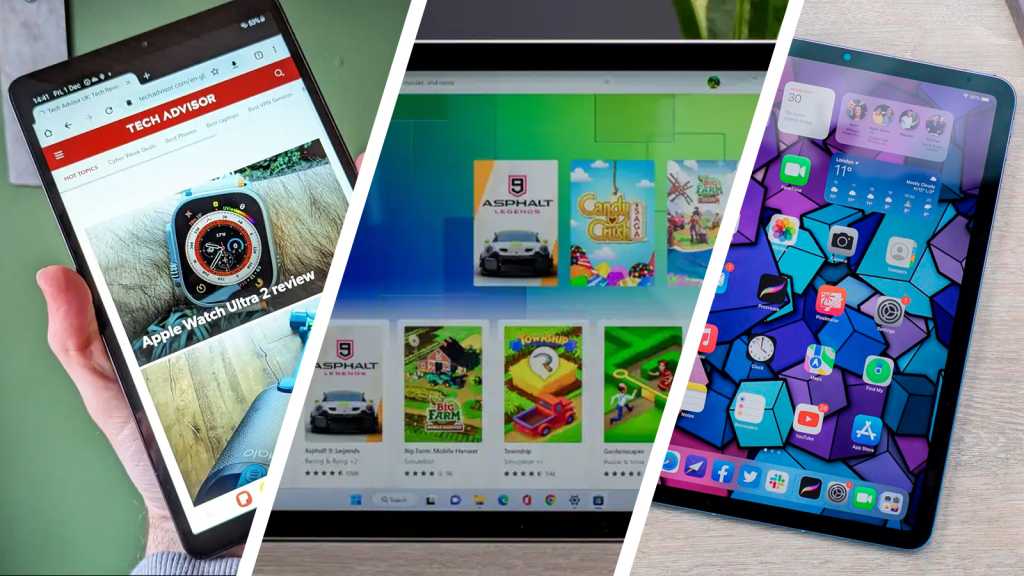Tablet computers have been around for decades, but it wasn’t until the original iPad was released in 2010 that they became a realistic option for everyone.
14 years later, the tablet has matured significantly as a product category, combining portability with excellent power and functionality. Even if it doesn’t replace your laptop, a tablet can be useful for getting work done, gaming, watching videos or simply surfing the web.
If you’re reading this article, we’re going to assume that you’re interested in buying a new tablet, and the good news is that there are loads of options. Apple’s iPad range remains the market leader, but there are lots of great Android tablets that are worth considering, plus a left-field choice that uses E Ink.
In this article, we’re highlighting the very best of both operating systems. We’ve reviewed and ranked devices at a range of different budgets, though read our separate guide to the best budget tablets if affordability is your top priority.
The only exceptions are Apple’s latest slates, but look out for full reviews of the new iPad Air and iPad Pro very soon.
Why you should trust us: Tablet reviews and buying advice have been a staple of Tech Advisor’s coverage since the original iPad and Samsung Galaxy Tab arrived in 2010.
We’ve seen tablet makers scramble to offer the biggest, brightest, highest-resolution, fastest-refreshing, toughest, displays; we’ve seen an arms race in processors and graphics in the quest for the ultimate portable performance; continued improvements to accessories and software to make for the best possible productivity experience; a push for batteries that can go – never mind all day – but all week; and new technologies that enable water resistance and vastly improve audio.
We’ve held your hand through a fascinating journey of tablet hardware, and today – some 14 years later – it’s the software smarts and once impossible to imagine AI capabilities that glue us to this path. We perform in-depth, real-world testing on every new tablet that’s worth buying, integrating it into our daily lives for the most authentic experience possible and making sure we are in a position to give you the best possible buying advice.
Best tablet 2024
1. Apple iPad Air (2022) – Best overall
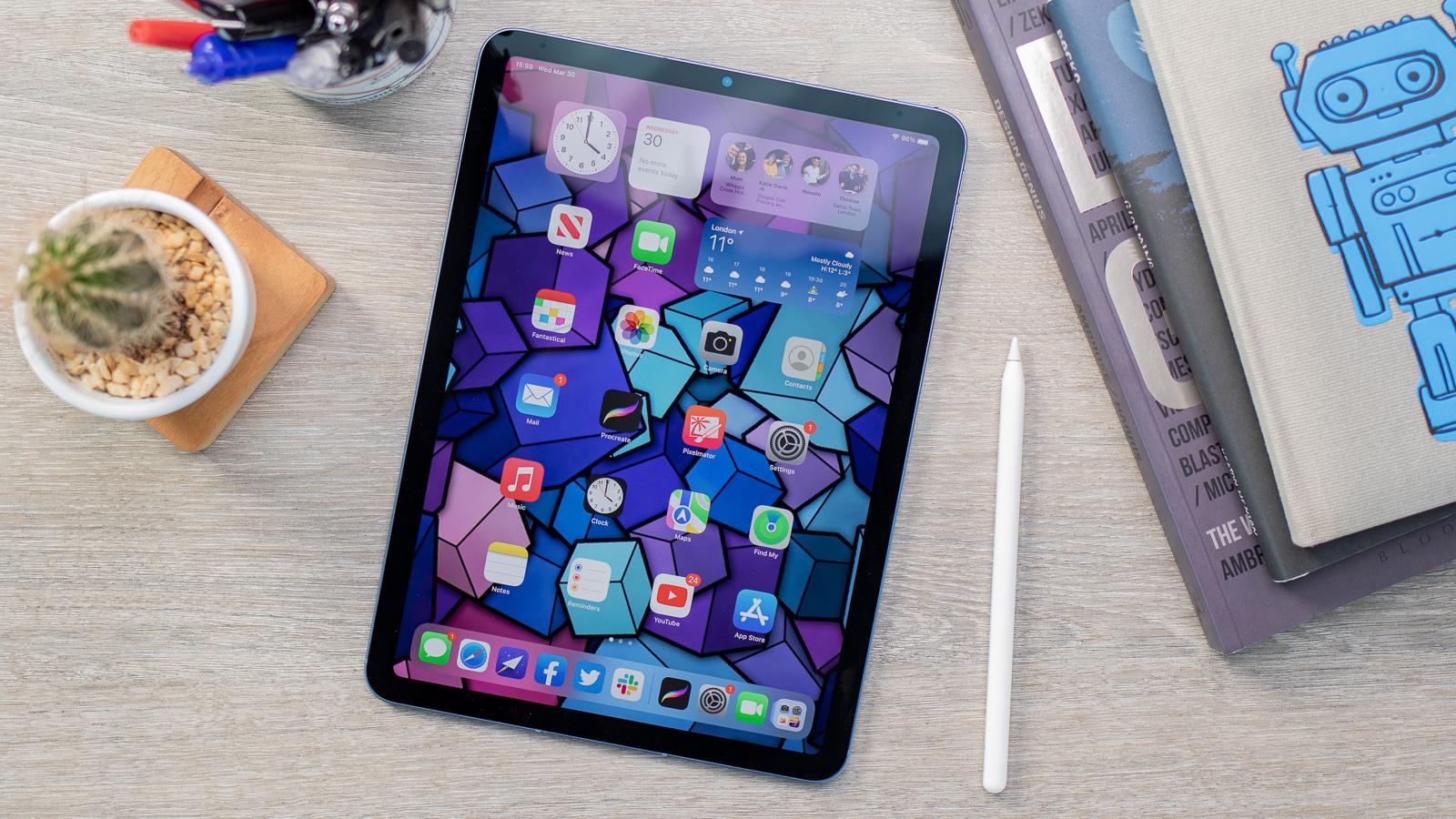
Pros
- Great design
- Large display
- Compatible with Pro accessories
Cons
- Awkward Touch ID placement
- A little pricey
- Thick bezels
Apple didn’t release any new iPads in 2023, meaning the Air from a year earlier was still the best you can buy until May of this year. That may have changed with the launch of the newer iPad Air and iPad Pro, but we can’t be sure until we review both.
In the meantime, there are compelling reasons for this 2022 model to stay top of the pile. Apple’s older M1 chipset still delivers stellar performance, especially when combined with the optional 5G support. You also have an excellent 12Mp front-facing camera with the Apple’s face-tracking Centre Stage tech, making it a superb choice for video calls.
Beyond that, it offers up the same premium design as earlier in an array of colours, plus Touch ID and compatibility with Apple’s Magic Keyboard and second-generation Apple Pencil. All Apple’s really done is given its best tablet an even longer lifespan, but that’s no bad think.
Unless you’re seriously considering an iPad to replace your laptop, this 2022 Air will probably do everything you need it to. If you’re already in the Apple Ecosystem and can find a discounted model, it’s still very easy to recommend.
2. Samsung Galaxy Tab S9 Plus – Best Android tablet
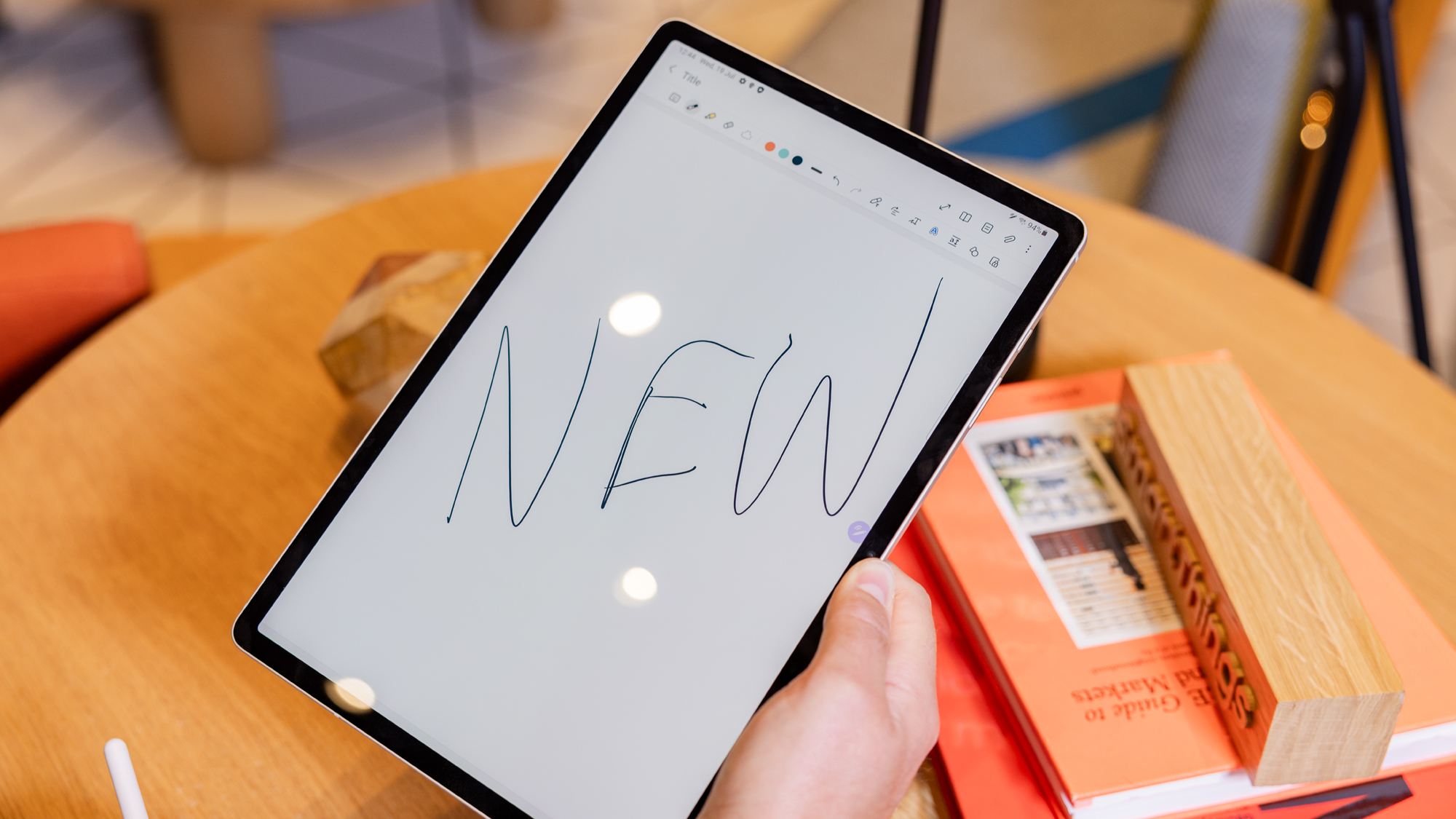
Pros
- Excellent performance
- Great screen and sound
- Versatile interface and controls
- Thin and waterproof
Cons
- Apps and performance behind iPad Pro
- Expensive
For most people, the S9 Plus is the sweet spot in Samsung’s 2023 Galaxy Tab range. It offers almost everything you’d want in an Android tablet, without the extortionate price of the Tab S9 Ultra.
It’s insanely thin at just 5.7mm and now comes with an IP68 rating – full dust and water resistance – that’s very unusual to find on a tablet.
The Tab S9 Plus is also more powerful than many laptops thanks to overclocked Snapdragon 8 Gen 2 Galaxy Edition and a whopping 12GB of RAM. There’s not much you can’t do with this slate and it’s also got a gorgeous 12.4-inch 120Hz OLED display.
With the S Pen stylus, long software support, AKG speakers and optional 5G, there’s no doubting this is an excellent tablet.
However, you may want to wait for the upcoming Galaxy Tab S10 series.
3. Samsung Galaxy Tab A9 – Best budget tablet
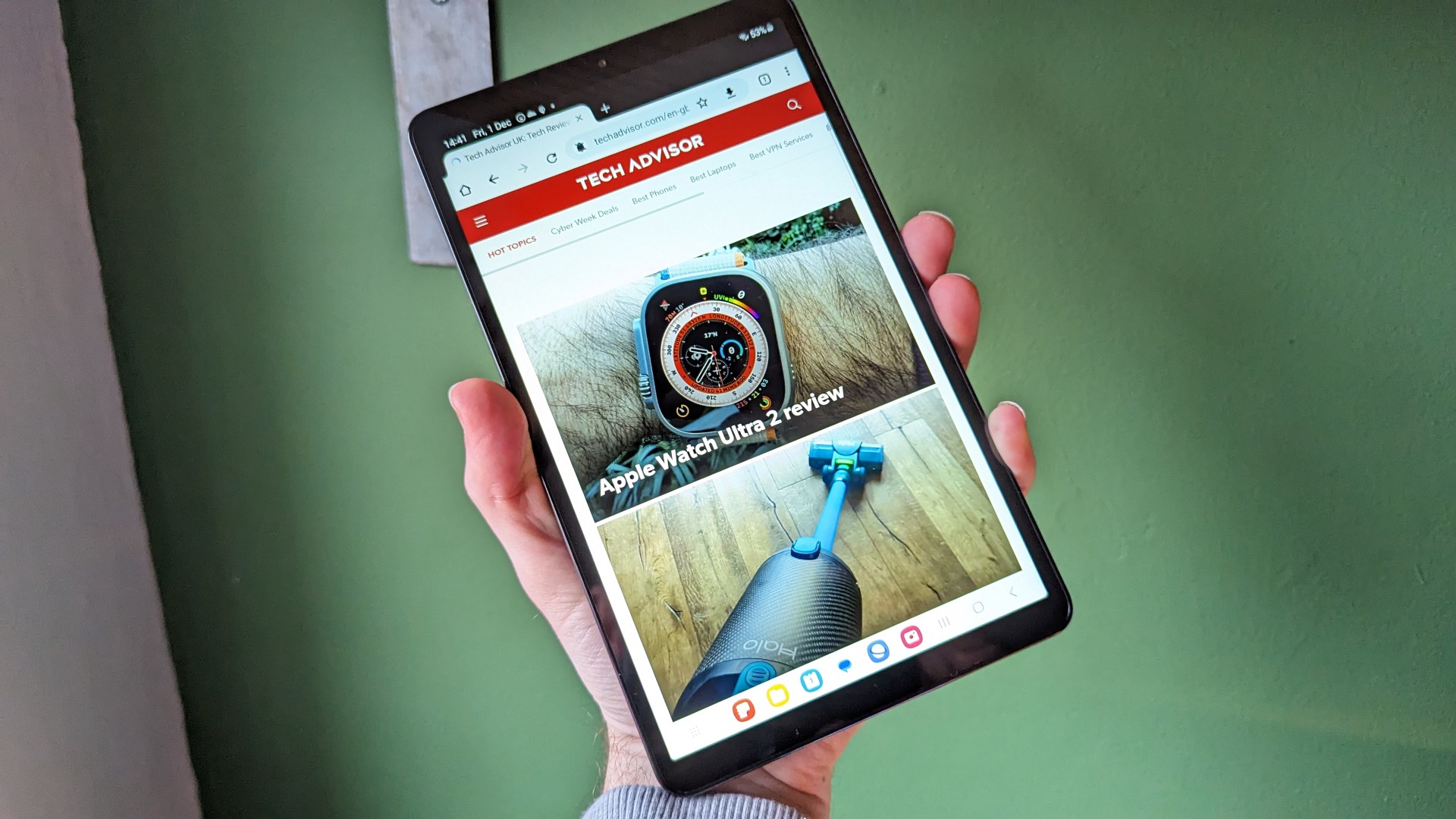
Pros
- Sleek, compact design
- Solid performance
- Great speakers
- Very affordable
Cons
- Slow charging
- Terrible cameras
- Blurry scrolling
- Not available in the US
If your budget is under £200 and you’re happy with an Android tablet, your decision is very simple – buy the Galaxy Tab A9.
Samsung’s latest cheap tablet is extraordinarily good value for money, combining strong performance with a solid 8.7-inch display, impressive quad speakers and even decent battery life. The One UI software isn’t quite as impressive as on Samsung’s phones, but it’s still one of the best versions on Android you’ll find on a tablet.
However, given it’s so cheap, it should come as no surprise that there are compromises. Scrolling often feels slow and looks blurry, while charging is only 15W and the cameras are very disappointing.
But you aren’t buying this tablet for its photographic abilities. And its the fundamentals of a great tablet where the Galaxy Tab A9 excels.
If you’re willing to pay a little bit more for a bigger screen, consider the 11-inch Galaxy Tab A9+ instead.
4. OnePlus Pad 2 – Best mid-range tablet
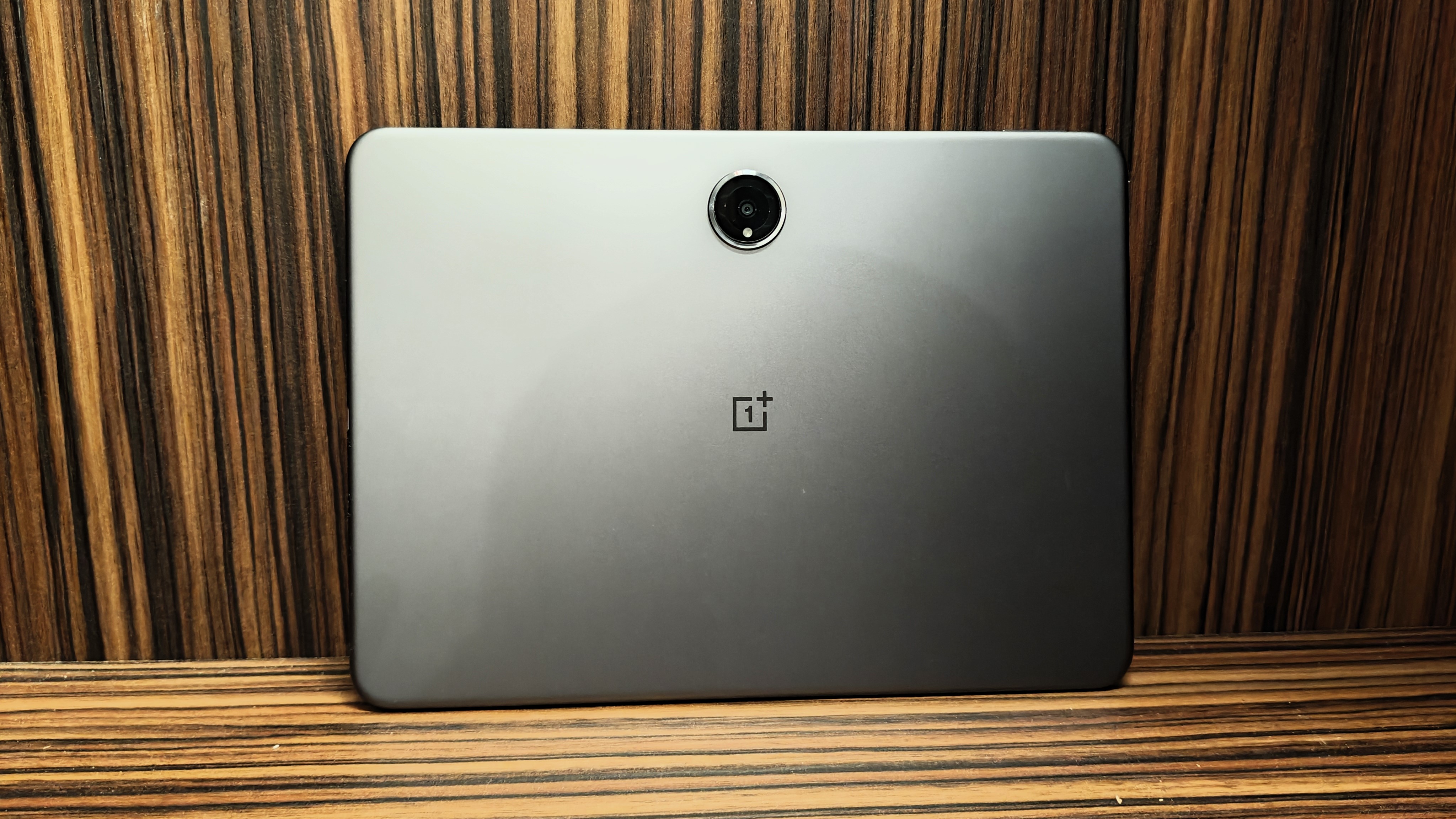
Pros
- Great performance for the price
- Comfortable, elegant design
- Good display and sound
- Excellent battery life
Cons
- Could be even faster
- Mediocre cameras
- Poor desktop mode
If you want something more than a budget slate but aren’t willing to pay flagship prices, look no further than the OnePlus Pad 2.
At launch, it costs just £499/$549.99, yet offers everything most people want from an Android tablet and more. That includes true flagship-level performance from the Snapdragon 8 Gen 3 chipset, even if benchmarks suggest a slight drop-off compared to flagship phones.
The lack of an OLED display doesn’t really feel like a compromise, with a highly capable 144Hz LCD one in its place. It’s housed within a premium yet elegant design that will stand the test of time, especially with OnePlus offering three years of OS updates and four years of security patches.
The software out of the box is also decent, with a few features that take advantage of the large display, while battery life is another key strength.
Its main weaknesses arrive in the form of forgettable cameras and a disappointing desktop-style mode when you connect it to an external display. But these are easy to overlook when you’re paying relatively little and getting so much.
5. Apple iPad Mini (2021) – Best small tablet
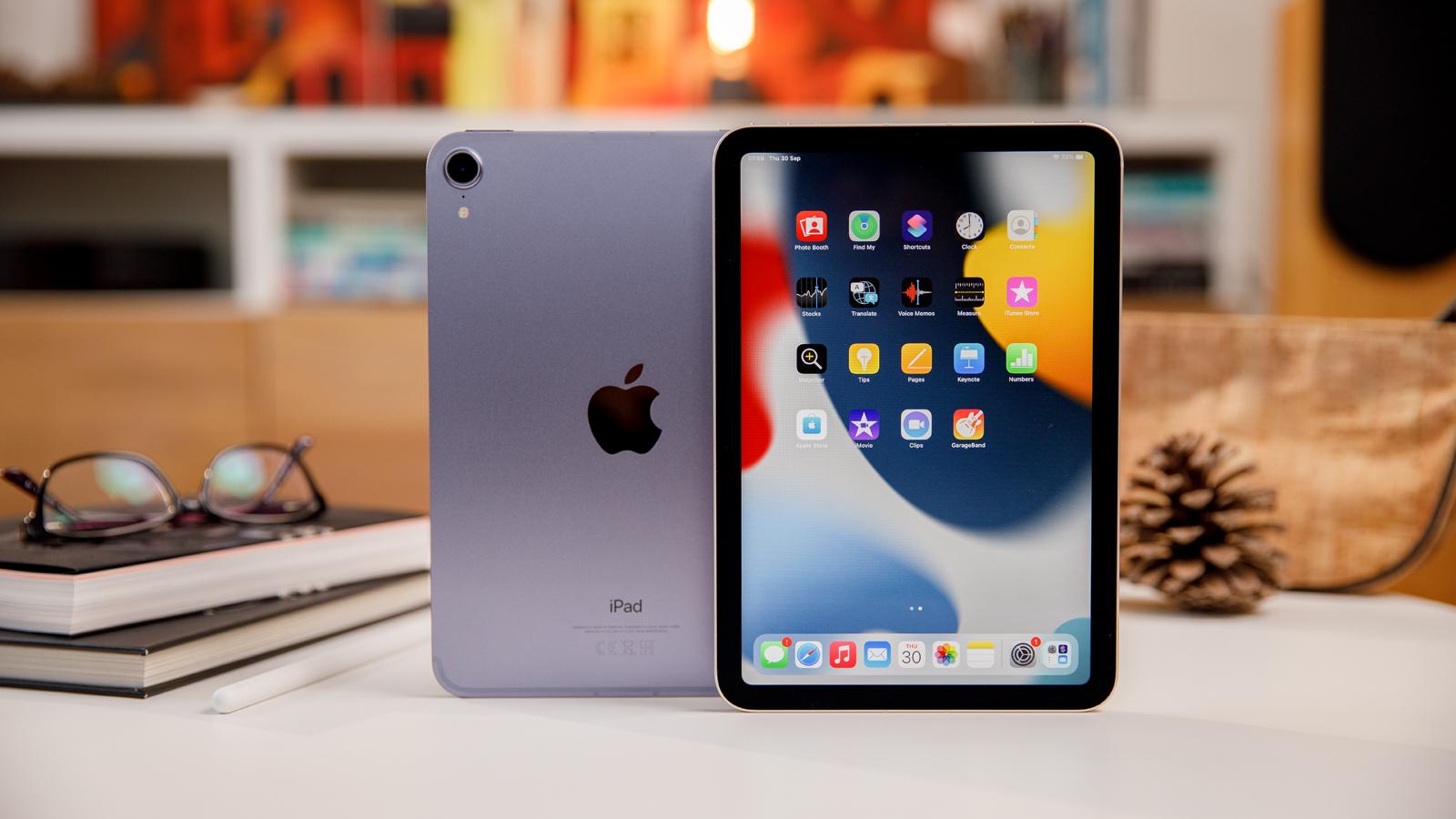
Pros
- Compact design
- Apple Pencil support
- Superb performance
Cons
- Slightly outdated hardware
- No Magic Keyboard support
The sixth-gen iPad Mini ditched the old form factor for something more akin to the iPad Air and Pro ranges; with an angular design, stereo speakers, Centre Stage technology and much smaller bezels than before.
The Mini’s 60Hz display jumped to 8.3 inches, but without changing the physical size of the tablet – allowing for more display real estate without affecting its portable nature. It’s a gorgeous display too, with the highest pixel density of any iPad right now, even if it is a bit on the small side for true split-screen multitasking.
It’s powered by the same A15 Bionic silicon as the iPhone 13 range, but that still means you get great performance in 2024.
The Touch ID sensor has been moved to the Power button – like with the iPad Air – and there’s support for the second-gen Apple Pencil to boot. However, the lack of a Smart Connector on the rear means that it doesn’t have its own Magic Keyboard; a real boon for the iPad Air and Pro ranges, and the only real chink in the Mini’s armour.
With no new iPad Mini expected until at least 2025, this version from 2021 is still worth considering, especially if you can find a discount.
6. Xiaomi Pad 6 – Great value for money
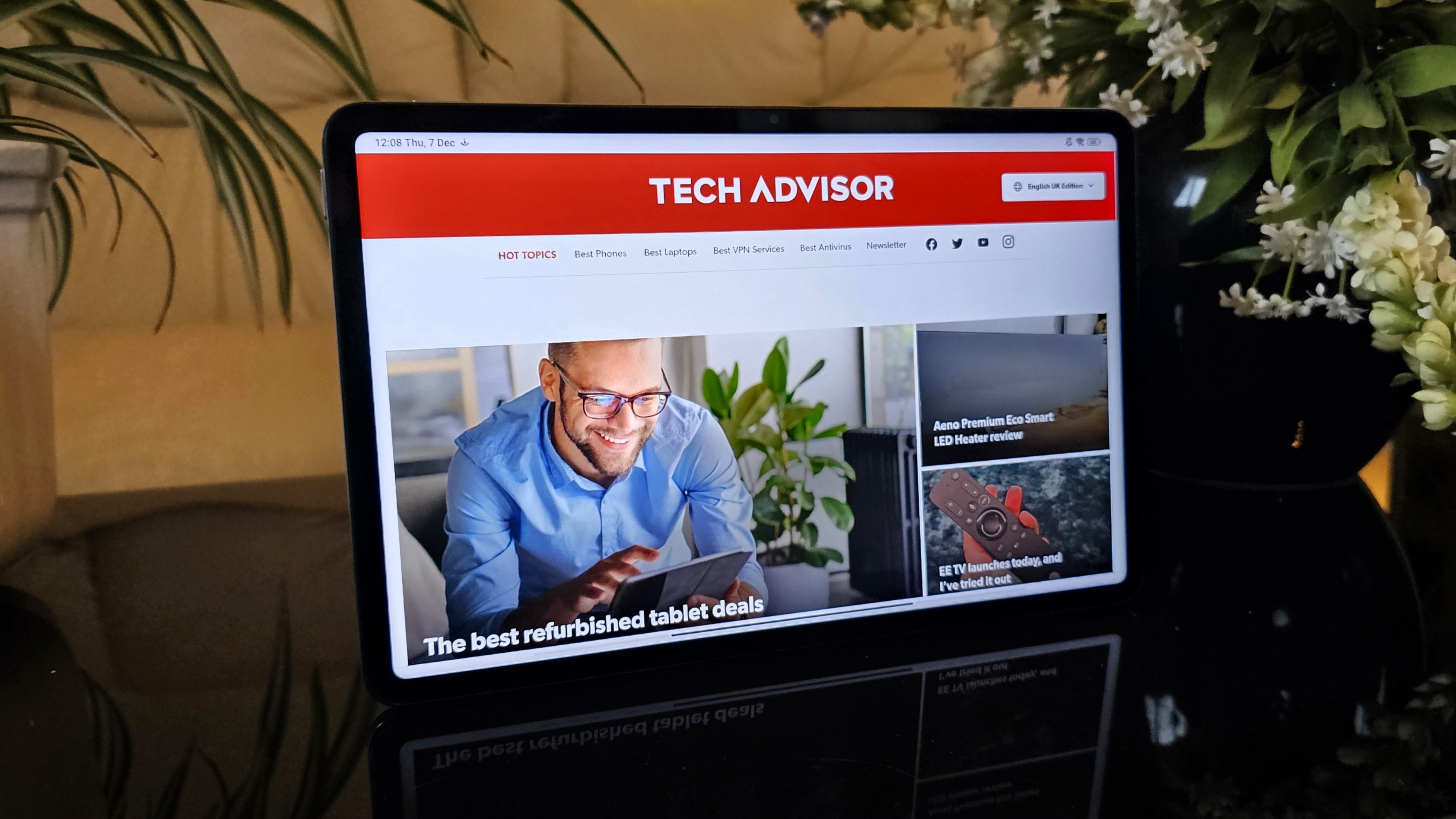
Pros
- Excellent 144Hz screen
- Impressive performance
- Premium build with IP53
- Good speakers
Cons
- Middling battery life
- No fingerprint sensor
- No software update commitment
The Xiaomi Pad 6 is an excellent tablet for the price, combining premium hardware with surprisingly good software.
Its Snapdragon 870 chipset is a little dated, but it still delivers top-tier performance. That helps power the impressive 11-inch LCD display, complete with smooth 144Hz refresh rate. Alongside punchy quad speakers, it’s a great tablet for content consumption.
Alongside a premium yet lightweight build, IP53 dust and water resistance rating and better than expected MIUI software, there’s very little to dislike here.
The only real downsides are the underwhelming battery life, no fingerprint sensor and the lack of a specific commitment to software updates. But these shouldn’t be dealbreakers for most people, considering everything else the Pad 6 has to offer.
7. Apple iPad Pro 12.9in (2022) – Best tablet for creatives
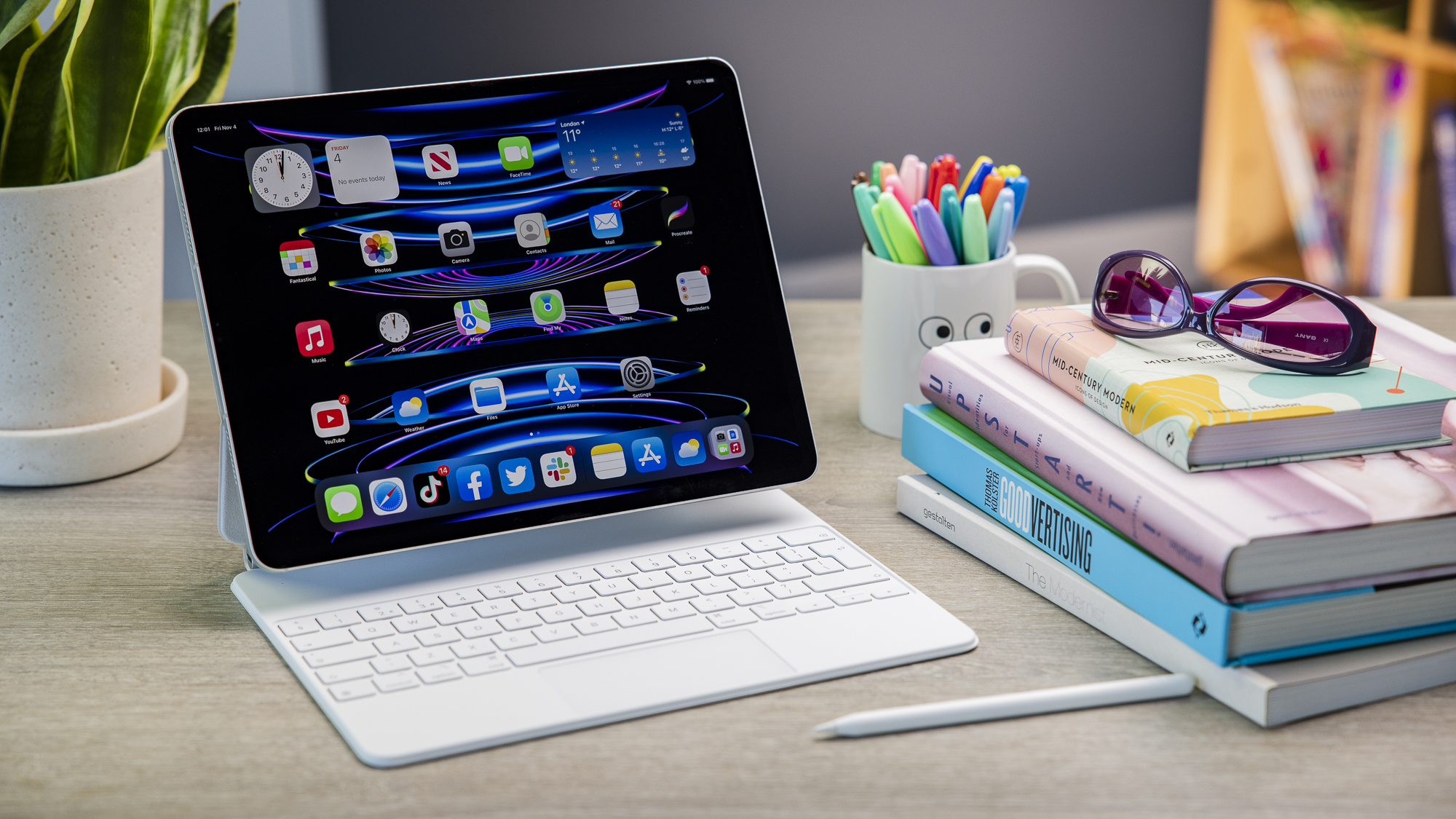
Pros
- Unmatched performance
- Excellent range of features
- Mini-LED screen
Cons
- Can be expensive
- Not many apps take advantage of M2
- Similar to previous-gen
The 2022 iPad Pro was the most capable tablet on the market at the time of its launch. It’s now been replaced at the top of Apple’s tablet range by the 2024 model, but until we review it, we can’t be sure how much of a difference the M4 chipset and OLED screen make.
Even, so the M2 in this older model still offers supreme power. And the LCD panel here remains one of the best displays around, with a 120Hz refresh rate and mini-LED backlighting that allows it to compete with OLEDs while being much brighter.
The experience is improved even more with the Apple Pencil and Magic Keyboard, with the latter turning the tablet into a fully-fledged laptop replacement. However, those are optional extras for a tablet that’s already very expensive – unless you can now find a discount.
Of course, you can save some money by opting for the smaller 11-inch model instead. But ultimately, unless you need loads of power and value creative features such as the Apple Pencil’s Hover mode, there are cheaper iPads that still offer everything you need in a tablet.
8. Samsung Galaxy Tab S9 Ultra – Best big tablet
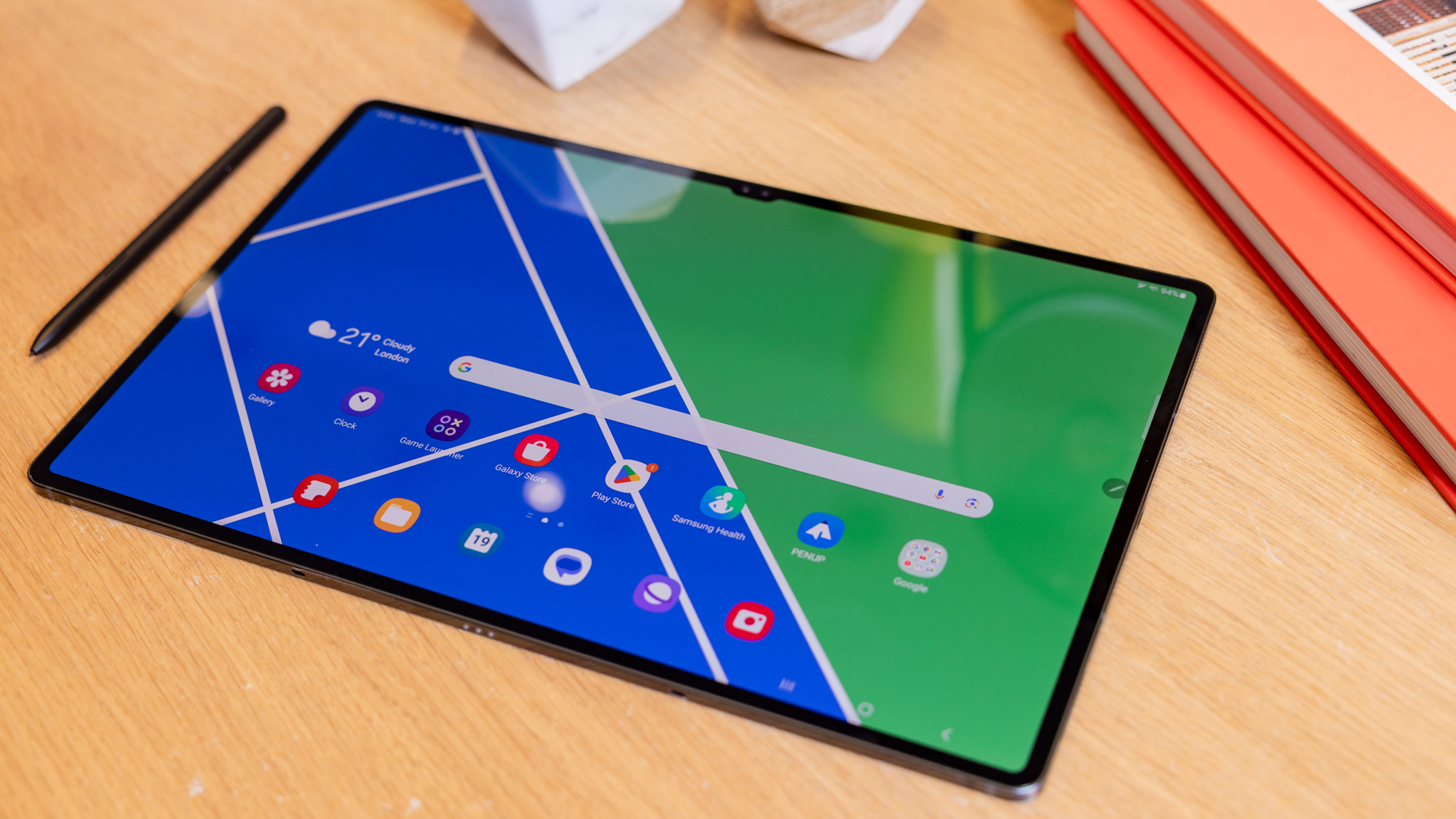
Pros
- Stunning 14.6in display
- Top-tier performance
- Great S Pen stylus
- IP68 rating
Cons
- Very expensive
- Many apps not optimised
- No 5G in the US
The Tab S9 Ultra is total overkill for most people as a tablet, and very expensive. But it’s an impressive feat of engineering, and having a huge 14.6-inch canvas to work with can be useful.
That 120Hz OLED display is a joy to use, especially when combined with stellar performance from an overclocked version of Qualcomm’s flagship 2022 chipset, the Snapdragon 8 Gen 2 chip. You also get decent battery life and an IP68 rating for water and dust resistance, all within an incredibly thin and light design.
Samsung includes an S Pen in the box, which is perfect for taking handwritten notes or digital art. But while the multitasking features are good, a lack of optimised apps really comes to the fore on such a large display.
With a high price tag and the keyboard cover sold separately, it’s not a realistic purchase for most people.
9. Google Pixel Tablet – Most versatile tablet
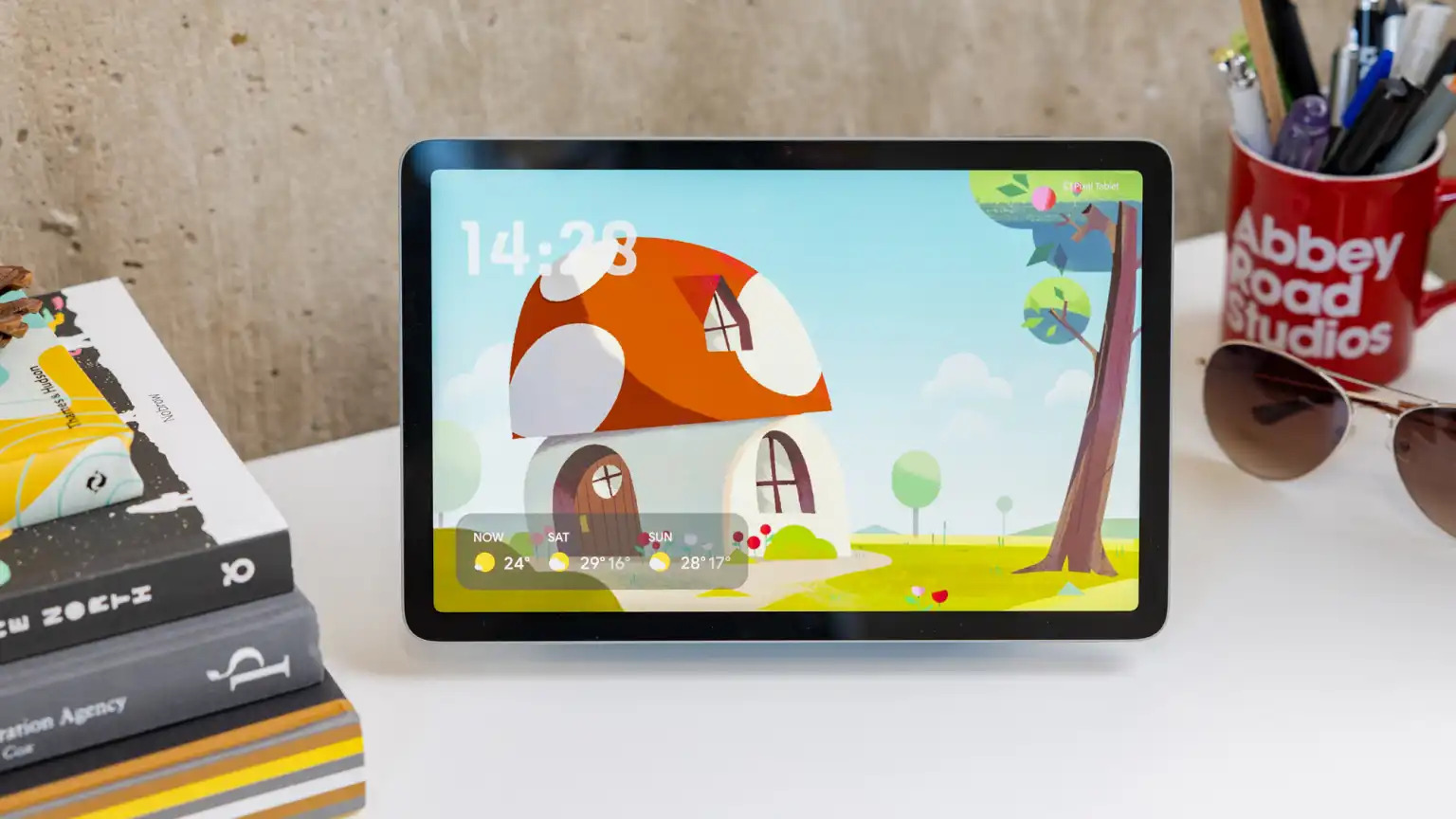
Pros
- Stylish design
- Useful optional dock
- Solid performance
- Good battery life
Cons
- Mediocre dock audio
- Missing Nest Hub features
- Slow charging
In many ways, Google’s first Pixel Tablet attempts to be two devices in one.
On one hand, this is a regular Android tablet, complete with an attractive 10.95-inch LCD display, good performance from the Tensor G2 chipset and strong battery life from the 27Wh.
However, connect it to the docking station and it becomes a Nest Hub-style smart display…sort of. There’s a dedicated ‘Hub Mode’ for while it’s attached, but there are far fewer features than you’ll actually get on a smart display. Speaker quality also isn’t as good as you might expect.
As a result, many people will want to buy what is a very solid tablet without the dock. And since May 2024 you can, with a price drop to reflect that.
The Pixel Tablet is by no means the best tablet out there, but it’s a decent slate which offers the versatility of a dock which will appeal to some people.
10. ReMarkable 2 – Best E Ink tablet
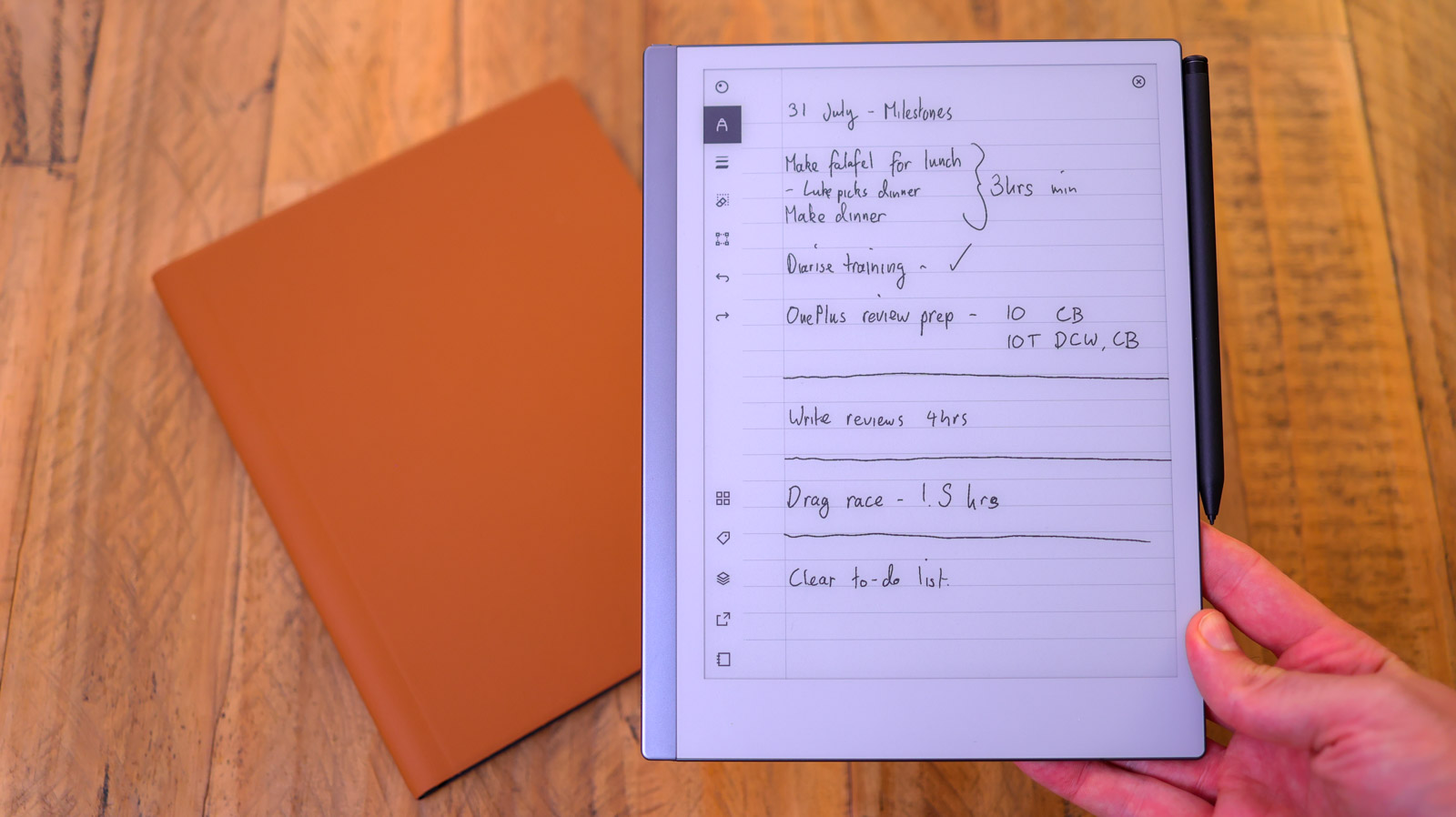
Pros
- Thin, light and stylish
- Excellent pen input
- Powerful companion app
- Continued software updates
Cons
- Pen not included
- Subscription unlocks all features
- Very occasional software gripes
- No backlight
For something a bit different to your traditional tablet, the ReMarkable 2 is well worth a look. This E Ink slate might look like a stylish rival to the Amazon Kindle but you can do a lot more than read books on it.
The stunningly thin design is a highlight here and the custom OS makes tasks like note taking very easy indeed and there’s clever cloud syncing, screen casting and online storage too.
On the downside, you have to pay for a subscription for everything to work and sadly ReMarkable doesn’t include a stylus and the screen doesn’t have a backlight for using the tablet in the dark.
Your buying guide to the best tablets in 2024
There’s lots to think about when buying a new tablet but we’ve got you covered with our buying advice below. Also, make sure to click through to the full reviews of any tablets you’re interested in to read more about them.
What should I look for when buying a tablet?
When buying a tablet there are lots of things to consider including build quality, design, size, core specifications, operating system, features, performance, battery life and more.
Which elements are important to you depends on what you need a tablet for. For entertainment, you’ll likely want to prioritise a large, colourful screen and good speakers but for productivity performance, battery life and accessories like a keyboard case are probably top of your list.
We have ranked the tablets above but that doesn’t automatically mean the one in first place is the best suited to your needs.
You’ll also need to decide how much to spend and devices can go beyond the $1,000/£1,000 mark if you buy a premium device in a high-spec model.
Of course, you can spend a lot less than that and we’ll often have cheaper models in this chart but also have a dedicated list of the best budget tablets if you have a tight budget.
Should I buy an Android, Windows or iPadOS tablet?
In the tablet world, you’ve got four main choices for operating systems: an iPad, an Android tablet, an Amazon Fire tablet or a Windows tablet.
Apple iPads run the company’s own iPadOS, which is widely regarded as one of the best out there. It’s easy to use and app developers usually make it their first choice, so you’re pretty much guaranteed to find what you’re after whether it’s a banking app or the latest games.
If you have an iPhone, then it’ll also be very familiar. This is valuable when you buy accessories that require apps – mainly smart home or fitness gadgets – as you may not be able to control these from a Windows (or Fire) tablet.
In most cases, apps are made available on Android as well as iPads, but not always. Android tablets can be cheaper than iPads, but there are some Samsung models which cost the same or are more expensive.
Windows tablets come in both cheap and expensive guises, with the advantage of being able to support the same programs you’re likely already used to running on your laptop or PC. There just aren’t as many finger-friendly tablet-optimised apps as you’d find on your phone or an iPad.
And that’s why most Windows tablets come with a keyboard (or at least offer one as an optional accessory) they’re really a hybrid of a laptop and tablet. But as you’ll find out in most of our Windows tablet reviews, this is rarely a case of getting the best of both worlds. One exception is the Surface Pro line, from Microsoft.
The fourth option is Amazon’s Fire tablets. These are based on open-source Android but are locked into Amazon’s own ecosystem, running on what’s called Fire OS. As such, you won’t find any Google services or apps on them natively, so bear this in mind. They are very affordable, though.
Bear in mind that some tablet makers use their own custom OS, such as the ReMarkable 2.
What is the best brand for tablets?
Apple is probably the brand most people think of first when it comes to tablets thanks to the dominance of the iPad. If you can afford one and it ticks your boxes then great, but there are reliable alternatives.
As mentioned, Amazon makes its own Fire Tablet range but when it comes to Android and Windows slates there are almost too many to choose from – although we are big fans of Microsoft’s own Surface devices, many of which are tablets.
Many of the top brands make both Windows and Android tablets and we’d recommend looking at devices from the likes of Samsung, Lenovo, Asus and Xiaomi. Other brands include Huawei, Nokia, Realme and OnePlus.

